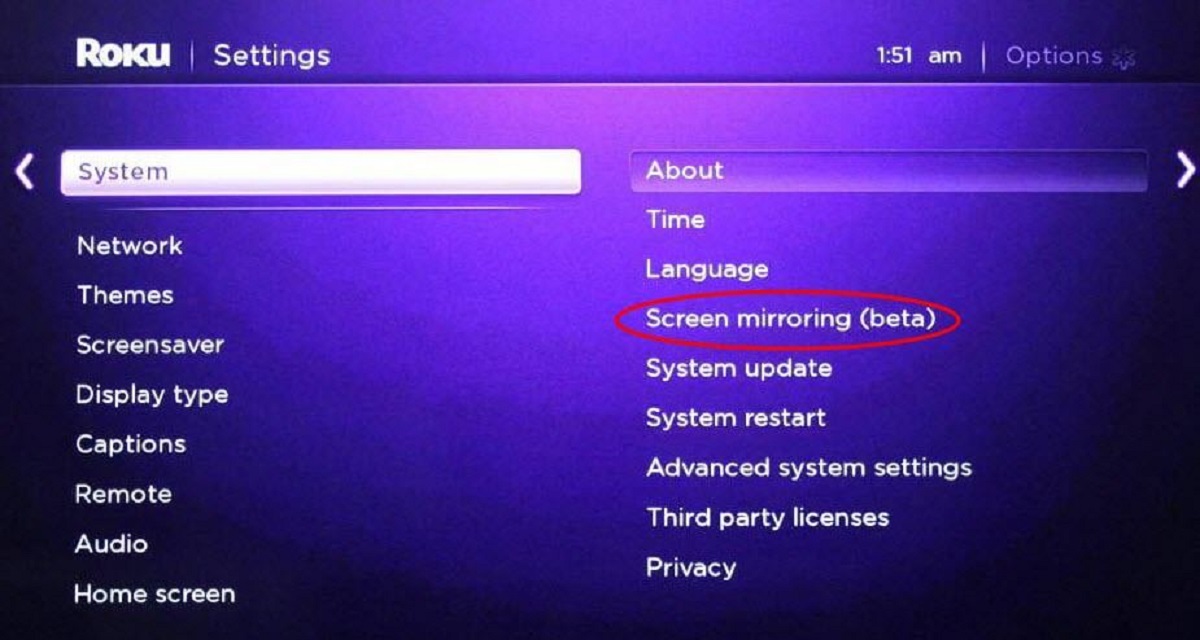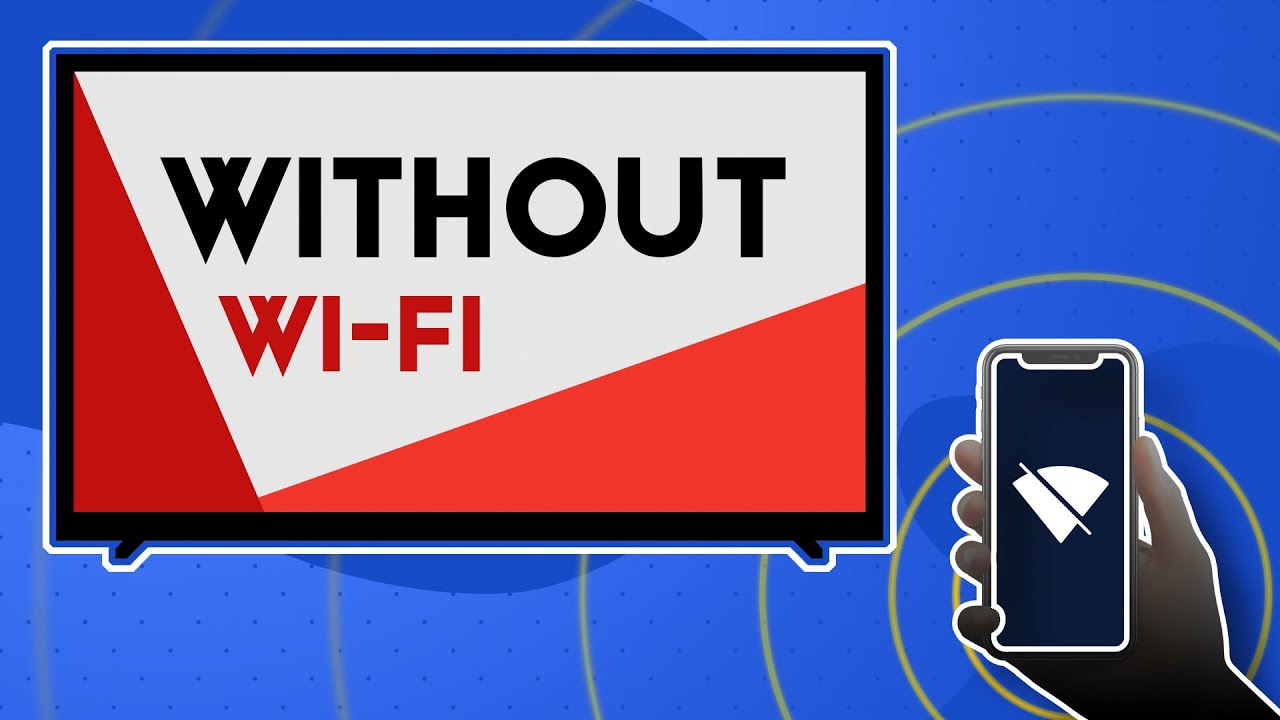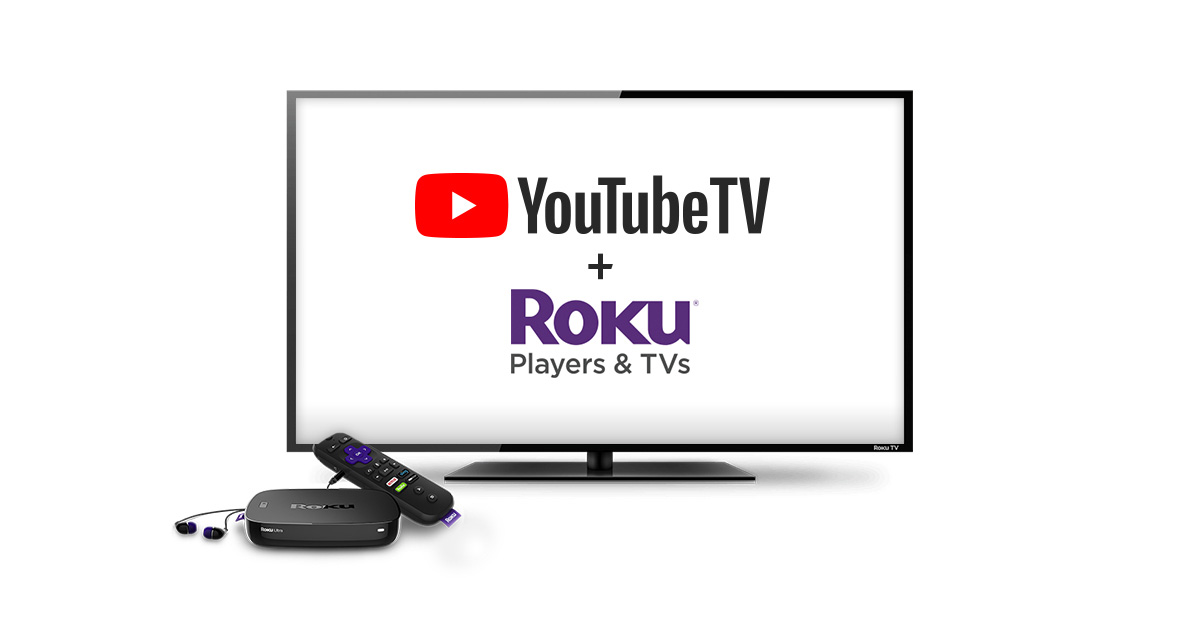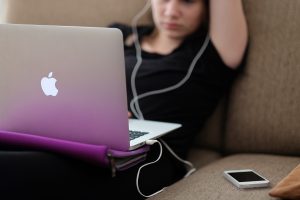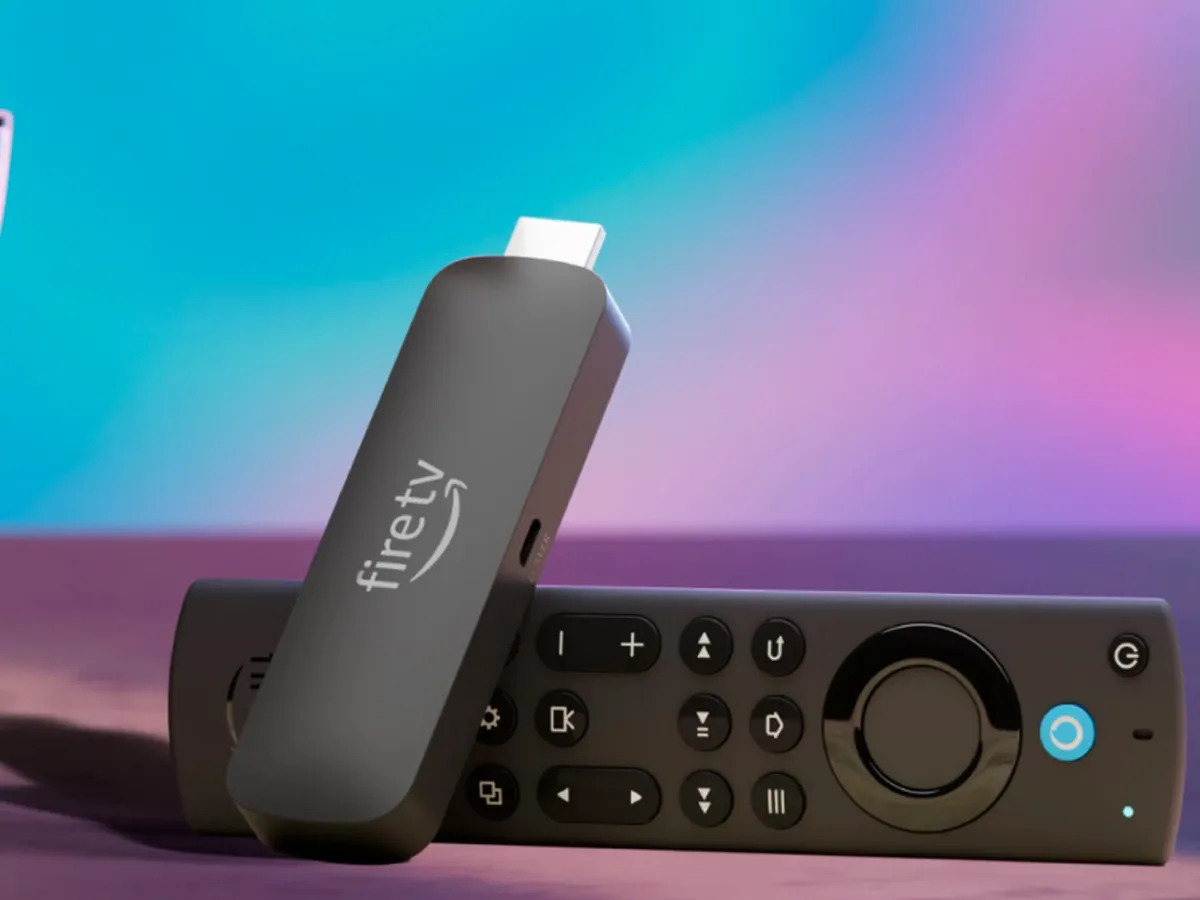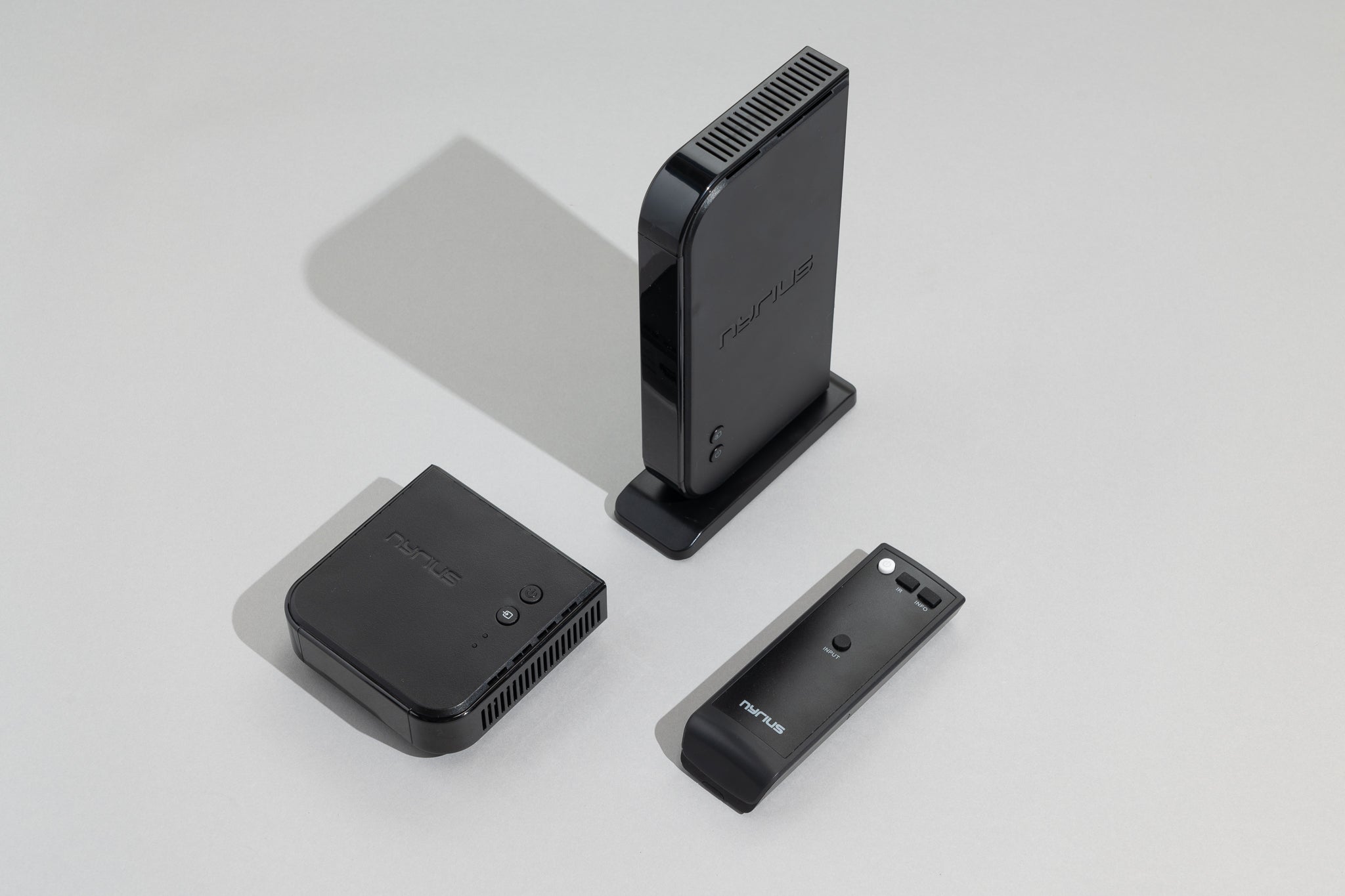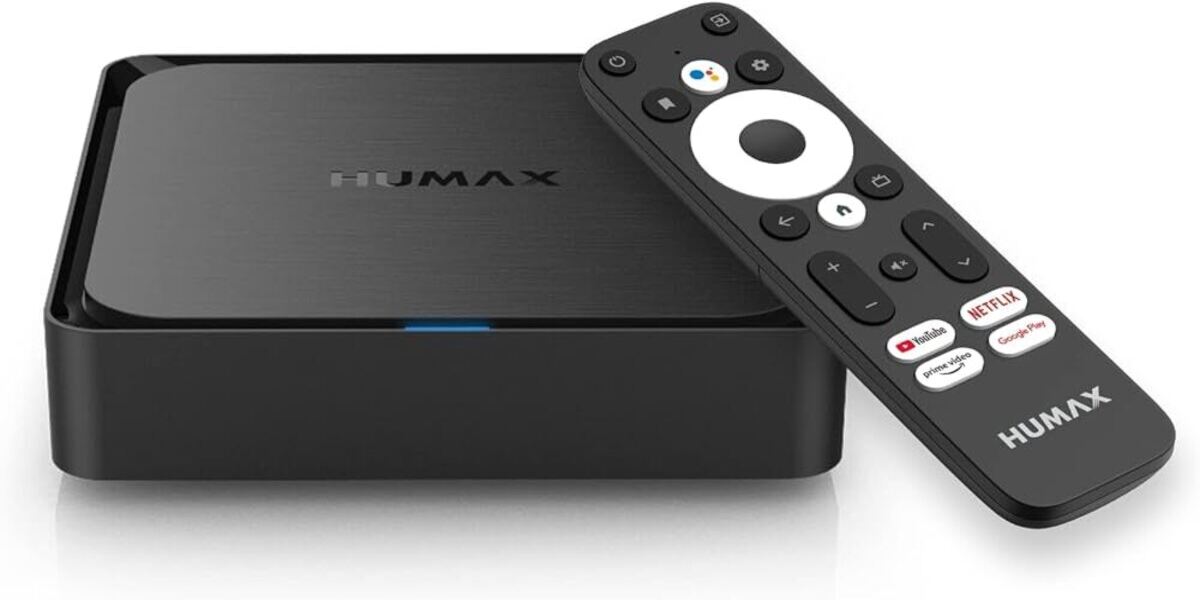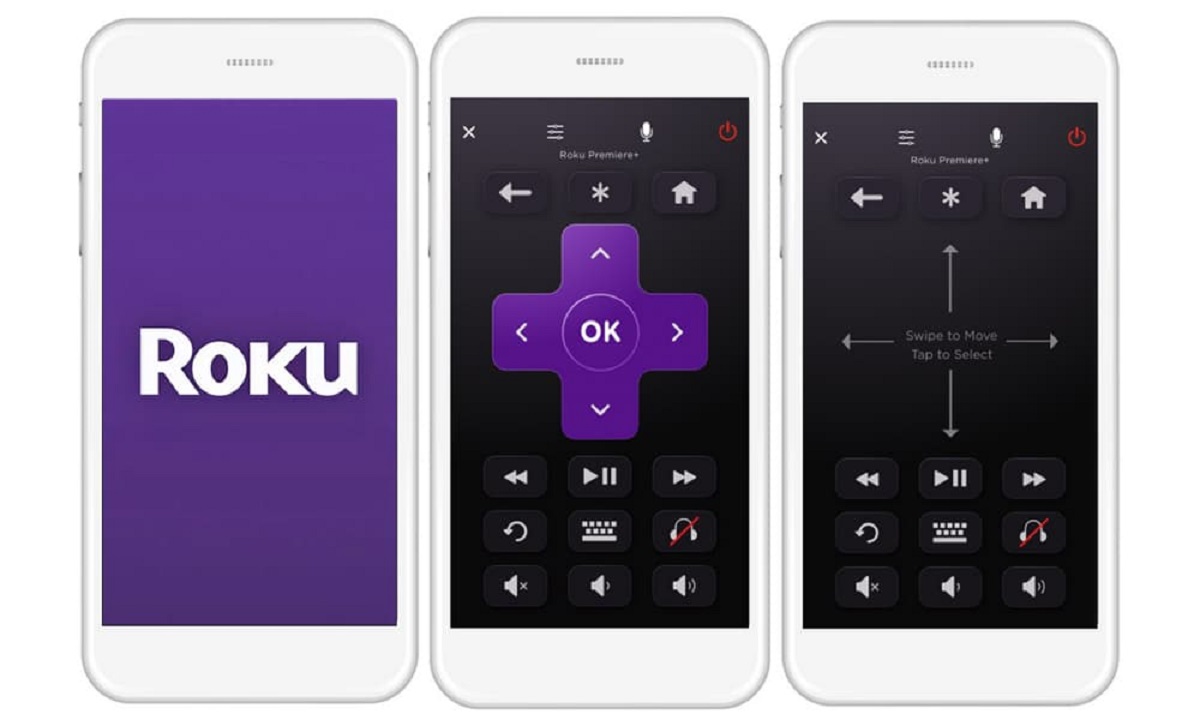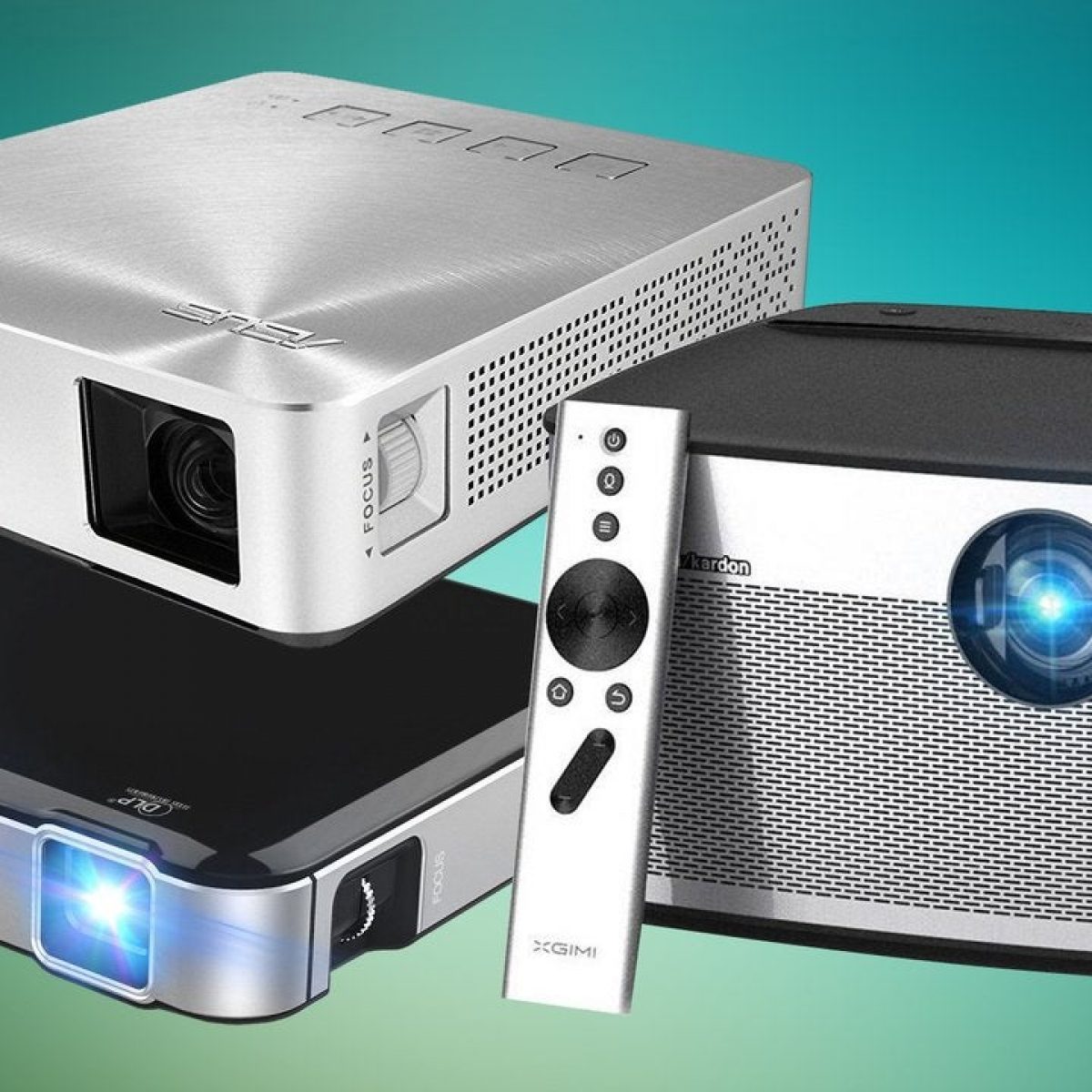Introduction
Welcome to the world of smart entertainment where technology allows us to stream our favorite content on big screens. Roku, a popular streaming device, offers a wide range of entertainment options, including movies, TV shows, and music, right in the comfort of our living rooms. But what if you want to mirror your iPhone screen to Roku without Wi-Fi?
Screen mirroring is a convenient feature that allows you to display your iPhone’s screen on a larger display, like a TV, using Roku as the intermediary. With screen mirroring, you can enjoy your favorite photos, videos, games, and apps on a bigger screen.
While the traditional method of mirroring requires a Wi-Fi connection, there are situations where you may not have access to Wi-Fi or want to keep your streaming activities private. In such instances, mirroring your iPhone to Roku without Wi-Fi can be a useful workaround.
In this article, we will explore different methods to mirror your iPhone to Roku without the need for Wi-Fi. Whether you’re on a road trip, staying at a hotel with limited Wi-Fi access, or simply prefer a more direct connection, we’ve got you covered.
What is Roku?
Roku is a popular streaming device that allows users to access a wide range of digital content conveniently. Founded in 2002, Roku has become a household name in the world of streaming media players. With its user-friendly interface and extensive collection of streaming channels, Roku has revolutionized the way we consume entertainment.
Unlike traditional cable or satellite TV providers, Roku offers a more personalized and flexible streaming experience. It connects directly to your TV and provides access to a vast selection of free and paid streaming services, such as Netflix, Hulu, Disney+, Amazon Prime Video, and many more.
Roku devices come in various models, including streaming sticks, set-top boxes, and smart TVs with built-in Roku functionality. Each model offers different features and capabilities, but they all share the same goal of providing seamless streaming experiences.
One of the key advantages of Roku is its simplicity. Setting up a Roku device is quick and easy, and the intuitive interface makes navigating through streaming channels effortless. With a user-friendly remote control, you can effortlessly search for content, adjust volume, and control playback without any hassle.
Roku also stands out for its versatility. In addition to streaming popular movies and TV shows, Roku offers a wide range of channels for different interests. Whether you’re into fitness, cooking, news, sports, or kids’ entertainment, you’ll find a channel to suit your preferences.
Furthermore, Roku devices support a variety of streaming resolution options, from standard definition (SD) to high definition (HD) and even 4K Ultra HD. This ensures that you can enjoy your favorite content in the highest quality possible, depending on your TV’s capabilities.
Overall, Roku has become a go-to choice for many streamers around the world due to its affordability, ease of use, extensive channel selection, and compatibility with various TV models. Whether you’re a casual viewer or a dedicated binge-watcher, Roku provides a seamless streaming experience that caters to your entertainment needs.
What is screen mirroring?
Screen mirroring, also known as screen casting, is a feature that allows you to replicate the contents of your device’s screen onto a larger display, such as a TV or a computer monitor. With screen mirroring, you can share videos, photos, presentations, apps, games, and more, making it a convenient tool for both personal and professional use.
This feature provides a wireless connection between your device and the receiving display, enabling you to view the contents of your device on a larger screen in real-time. It essentially mirrors your device’s screen, creating a duplicate display on the external monitor or TV.
Screen mirroring is supported by various devices and operating systems, including smartphones, tablets, laptops, and smart TVs. For example, if you have an iPhone or an Android device, you can mirror your screen to a TV or monitor that supports screen mirroring.
There are several benefits to using screen mirroring. Firstly, it allows you to enjoy your favorite content on a larger screen, which enhances the viewing experience. Whether you want to watch movies, play games, or share photos with friends and family, screen mirroring provides a more immersive and visually appealing display.
In addition, screen mirroring can be a valuable tool for presentations and meetings. Instead of relying on a small laptop screen or projector, you can cast your screen to a larger display, making it easier for everyone in the room to see and understand your content.
Furthermore, screen mirroring eliminates the need for cables and physical connections, providing a seamless and wireless experience. This makes it more convenient and portable, allowing you to move around and interact with your device while still having the content displayed on the larger screen.
It’s worth noting that screen mirroring requires both the sending device (e.g., your smartphone) and the receiving display (e.g., the TV) to support screen mirroring functionality. Additionally, the devices need to be connected to the same Wi-Fi network in most cases, although there are alternative methods for mirroring without Wi-Fi, which we will explore in this article.
Overall, screen mirroring is a versatile feature that offers numerous possibilities for sharing and enjoying content on larger screens. Whether you want to entertain, present, or collaborate, screen mirroring provides a convenient and effective solution for extending your device’s display to a bigger screen.
Why mirror iPhone to Roku without Wi-Fi?
Mirroring your iPhone to Roku without the need for Wi-Fi can be advantageous in several situations. While Wi-Fi connectivity is commonly used for screen mirroring, there are certain circumstances where having a direct connection can offer more convenience or privacy.
One of the main reasons to mirror your iPhone to Roku without Wi-Fi is when you are on the go or traveling. Whether you’re in a car, a hotel, or a location with limited or no Wi-Fi access, being able to mirror your iPhone screen to Roku without a Wi-Fi connection allows you to enjoy your favorite content without relying on external network availability.
Moreover, mirroring without Wi-Fi can provide a more secure and private streaming experience. When connected to public Wi-Fi networks, there is always a potential risk of unauthorized access or data breaches. By using a direct connection between your iPhone and Roku, you can minimize the chances of your streaming activities being intercepted or compromised.
In some cases, you may also want to mirror your iPhone screen to Roku without Wi-Fi to avoid potential issues with network congestion or latency. Wi-Fi networks can sometimes be congested, especially in crowded areas, leading to slower streaming speeds or interruptions. By utilizing a direct connection, you can ensure a more stable and reliable streaming experience.
Another reason for mirroring without Wi-Fi is to conserve data usage. Streaming content over Wi-Fi can consume a significant amount of data, especially when watching high-quality videos or streaming for extended periods. By mirroring your iPhone to Roku without using Wi-Fi, you can reduce your data usage, which can be beneficial if you have limited data plans or want to save on data costs.
Furthermore, mirroring without Wi-Fi can be useful for scenarios where you want to mirror your iPhone to Roku discreetly. For example, if you are in a meeting or a classroom setting, you may not want to rely on network connectivity or disturb others by using Wi-Fi. Direct mirroring allows you to keep your streaming activities private and avoid any potential distractions.
In summary, there are various reasons why you might choose to mirror your iPhone to Roku without Wi-Fi. From enjoying seamless streaming on the go, to maintaining privacy and security, to conserving data usage, direct mirroring provides a convenient and reliable alternative when Wi-Fi connectivity is limited or not preferred.
Requirements for mirroring iPhone to Roku without Wi-Fi
Before you can mirror your iPhone to Roku without Wi-Fi, there are a few essential requirements you need to meet. These requirements ensure that you have the necessary equipment and settings to establish a direct connection between your iPhone and Roku device.
1. Roku device: First and foremost, you will need a Roku device that supports screen mirroring. Most Roku models, including Roku Streaming Stick, Roku Premiere, Roku Ultra, and Roku Smart TVs, have screen mirroring capabilities. Ensure that your Roku device is updated to the latest software version to access the screen mirroring feature.
2. iPhone: You will need an iPhone running on iOS 11 or later. Screen mirroring is available on iPhone models 6s or newer. Ensure that your iPhone is also updated to the latest iOS version for optimal compatibility.
3. HDMI cable or adapter: One way to establish a direct connection between your iPhone and Roku device is by using an HDMI cable or adapter. You will need a Lightning Digital AV Adapter (for iPhones with a Lightning port) or a USB-C Digital AV Multiport Adapter (for iPhones with a USB-C port) to connect your iPhone to the HDMI port on your Roku device or TV.
4. Third-party app: Alternatively, you can utilize a third-party app that enables screen mirroring without the need for Wi-Fi. These apps are available on the App Store and require installation on both your iPhone and Roku device. Some popular screen mirroring apps for iPhone include AirBeamTV, Mirror for Roku, and iWebTV.
5. Personal hotspot or travel router: If you don’t have access to a reliable Wi-Fi network, you can create a personal hotspot on your iPhone or use a travel router. By setting up a personal hotspot on your iPhone, you can connect both your iPhone and Roku device to the same network, allowing for direct screen mirroring. A travel router can also be used to establish a direct connection between your iPhone and Roku without the need for Wi-Fi.
Please note that the specific setup and requirements may vary depending on the model of your iPhone and Roku device. It’s always recommended to refer to the user manuals and instructions provided by the manufacturers for detailed information on setting up and configuring screen mirroring.
With the necessary equipment and settings in place, you can now proceed to the various methods available to mirror your iPhone to Roku without Wi-Fi. In the following sections, we will explore different methods that cater to different setups and preferences.
Method 1: Using a Lightning Digital AV Adapter
One of the easiest and most reliable ways to mirror your iPhone to Roku without Wi-Fi is by using a Lightning Digital AV Adapter. This method requires a physical connection between your iPhone and the HDMI port on your Roku device or TV.
Here’s how you can mirror your iPhone to Roku using a Lightning Digital AV Adapter:
- Start by disconnecting your Roku device from your TV, if it’s already connected.
- Connect one end of the HDMI cable to the HDMI port on your Roku device or TV.
- Connect the other end of the HDMI cable to the Lightning Digital AV Adapter.
- Plug the Lightning end of the adapter into the charging port on your iPhone.
- Turn on your TV and switch to the appropriate HDMI input where your Roku device is connected.
- On your iPhone, you may get a prompt asking if you trust the connected device. Tap “Trust” to proceed.
- Once connected, your iPhone screen should be mirrored on your TV via the Roku device.
You can now enjoy your favorite apps, videos, photos, and games from your iPhone on the big screen.
It’s important to note that this method requires a wired connection, so you will need to have the Lightning Digital AV Adapter and an HDMI cable handy. The Lightning Digital AV Adapter is available from Apple and other authorized retailers.
By using the Lightning Digital AV Adapter, you can establish a direct connection between your iPhone and Roku, bypassing the need for Wi-Fi. This method is ideal for situations where you have limited or no access to Wi-Fi but still want to enjoy streaming content on your TV.
Keep in mind that the screen mirroring experience may vary depending on the capabilities and specifications of your Roku device and TV. Some models may support higher resolutions, such as HD or 4K, while others may be limited to standard definition (SD).
If you encounter any issues with the screen mirroring process, refer to the instruction manual provided with your Roku device or visit Roku’s support website for troubleshooting assistance.
Method 2: Using a third-party app
If you prefer not to use a physical connection and want a wireless solution to mirror your iPhone to Roku without Wi-Fi, you can utilize a third-party app. There are several apps available on the App Store that allow you to mirror your iPhone screen to Roku devices wirelessly.
Follow these steps to mirror your iPhone to Roku using a third-party app:
- On your iPhone, open the App Store and search for a screen mirroring app that is compatible with Roku.
- Download and install the app on your iPhone.
- Make sure your iPhone and Roku device are connected to the same Wi-Fi network.
- Launch the screen mirroring app on your iPhone and follow the on-screen instructions to connect it to your Roku device.
- Once the connection between your iPhone and Roku is established, you can start mirroring your iPhone screen to your TV through the Roku device.
These third-party apps utilize screen mirroring technologies to establish a wireless connection between your iPhone and Roku. They typically provide options to adjust display settings, change video quality, and even enable audio streaming for a complete mirroring experience.
Popular screen mirroring apps for iPhone that support Roku include AirBeamTV, Mirror for Roku, and iWebTV. It’s crucial to read app reviews and check compatibility with your specific Roku device model before downloading and purchasing any app.
Note that the performance and quality of screen mirroring using third-party apps may depend on several factors such as network speed, device compatibility, and the capabilities of your Roku device.
While using a third-party app offers wireless convenience, it’s advisable to ensure the security and privacy of your data by downloading apps from trusted sources and regularly updating your devices and apps to the latest versions.
Additionally, it’s worth noting that some third-party screen mirroring apps may offer free trials or basic functionality with the option to unlock additional features through in-app purchases. Make sure to review the app’s pricing structure and features before making any purchases.
Now that you’re familiar with the process, you can explore different third-party screen mirroring apps for iPhone and find the one that best suits your needs to enjoy seamless and wireless screen mirroring to your Roku device without the need for Wi-Fi.
Method 3: Using a personal hotspot
If you have a personal hotspot feature available on your iPhone, you can use it to establish a direct connection between your iPhone and Roku device, allowing for screen mirroring without the need for Wi-Fi. This method is useful when you’re on the go or in a location without access to a reliable Wi-Fi network.
Follow these steps to mirror your iPhone to Roku using a personal hotspot:
- On your iPhone, go to “Settings” and tap on “Personal Hotspot.”
- Toggle the switch to turn on Personal Hotspot.
- Set a Wi-Fi password for your personal hotspot if prompted.
- On your Roku device, navigate to the network settings and connect to your iPhone’s personal hotspot. This is usually done through the “Settings” > “Network” menu on your Roku device.
- Once the Roku device is connected to your iPhone’s personal hotspot, go to the “Screen Mirroring” option on the Roku device’s settings menu.
- Select your iPhone from the list of available devices to start mirroring your iPhone screen to your Roku device.
With the personal hotspot feature enabled on your iPhone and the Roku device connected to it, you can enjoy screen mirroring without relying on external Wi-Fi networks.
Keep in mind that using a personal hotspot to mirror your iPhone to Roku consumes data from your cellular plan, so make sure you have sufficient data available or consider using an unlimited data plan to avoid any extra charges.
Furthermore, the quality and performance of screen mirroring may depend on the strength of your cellular network connection. Ensure that your iPhone has a stable cellular signal for optimal streaming quality.
Please note that the process of connecting to a personal hotspot and accessing screen mirroring may vary depending on the specific models of your iPhone and Roku device. Refer to the respective user manuals or online support resources for detailed instructions tailored to your devices.
By utilizing your iPhone’s personal hotspot feature, you can establish a direct connection between your iPhone and Roku device, avoiding the need for Wi-Fi, and allowing for smooth and hassle-free screen mirroring on the go.
Method 4: Using a travel router
If you’re looking to mirror your iPhone to Roku without Wi-Fi in situations where a personal hotspot is not available or viable, using a travel router can be an alternative solution. A travel router creates a local network that allows you to connect your iPhone and Roku device without the need for a traditional Wi-Fi network.
Here’s how you can mirror your iPhone to Roku using a travel router:
- Obtain a travel router that supports Wi-Fi hotspot functionality. Some popular options include TP-Link, GL.iNet, and HooToo.
- Connect the travel router to a power source and follow the manufacturer’s instructions to set it up.
- On your iPhone, go to “Settings” and enable Wi-Fi.
- Connect your iPhone to the Wi-Fi network created by the travel router.
- On your Roku device, navigate to the network settings and connect to the same Wi-Fi network generated by the travel router.
- Once the Roku device is connected to the travel router’s network, go to the “Screen Mirroring” option on the Roku device’s settings menu.
- Select your iPhone from the list of available devices to start mirroring your iPhone screen to your Roku device.
Using a travel router allows you to create a private local Wi-Fi network, which your iPhone and Roku device can connect to without relying on external Wi-Fi networks. This method ensures a direct and secure connection for screen mirroring.
When selecting a travel router, consider factors such as compatibility, range, and ease of setup. Look for a travel router that offers a Wi-Fi hotspot mode and supports the necessary protocols for screen mirroring with your Roku device.
Travel routers provide flexibility, making them a useful tool not only for mirroring your iPhone to Roku without Wi-Fi but also for creating a portable Wi-Fi network for other devices while you’re on the go.
Remember that the specific steps for connecting your iPhone and Roku device to the travel router’s network may vary depending on the router model and firmware. Refer to the manufacturer’s instructions for detailed guidance specific to your travel router.
By utilizing a travel router, you can establish a direct connection between your iPhone and Roku device, enabling wireless screen mirroring without relying on traditional Wi-Fi networks. This method is especially beneficial for those in remote locations or situations where Wi-Fi access is limited or unreliable.
Conclusion
Mirroring your iPhone to Roku without the need for Wi-Fi opens up new possibilities for enjoying your favorite content on a bigger screen in various scenarios. Whether you’re on the go, in a location with limited Wi-Fi access, or simply want a more direct and secure connection, the methods discussed in this article provide practical solutions for wireless screen mirroring.
We explored four methods to mirror iPhone to Roku without Wi-Fi. Using a Lightning Digital AV Adapter allows for a simple and reliable wired connection between your iPhone and Roku. Third-party apps offer a wireless solution, providing convenience and flexibility. With a personal hotspot or a travel router, you can establish direct connections without relying on external Wi-Fi networks.
When choosing the method that suits your needs, consider factors such as availability of equipment, compatibility with your devices, and the quality of your network connection. Keep in mind that the specific setup and requirements may vary depending on the model of your iPhone and Roku device.
By implementing these methods, you can enjoy a seamless mirroring experience, sharing your iPhone’s screen onto your TV through Roku. Whether you want to stream movies, share photos, give presentations, or play games, screen mirroring enhances your viewing experience and expands the possibilities of entertainment.
Remember to prioritize the security and privacy of your devices and data. Be cautious when using third-party apps, ensure that your personal hotspot is password-protected, and consider updating your devices and apps to the latest versions to safeguard against potential vulnerabilities.
With the knowledge and understanding of these methods, you can now mirror your iPhone to Roku without relying on traditional Wi-Fi networks. Embrace the convenience, flexibility, and freedom to enjoy your favorite content on a larger screen, wherever you may be.







